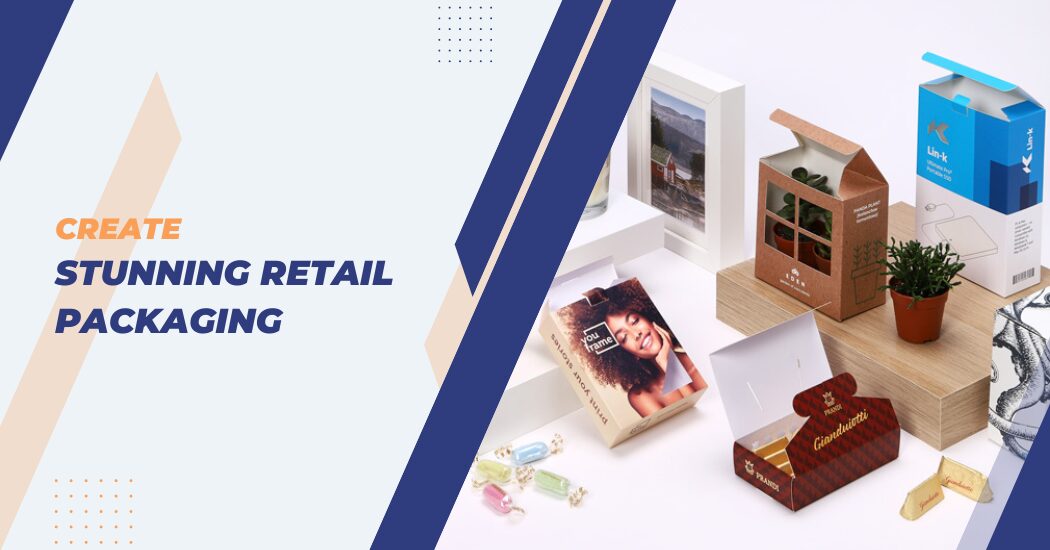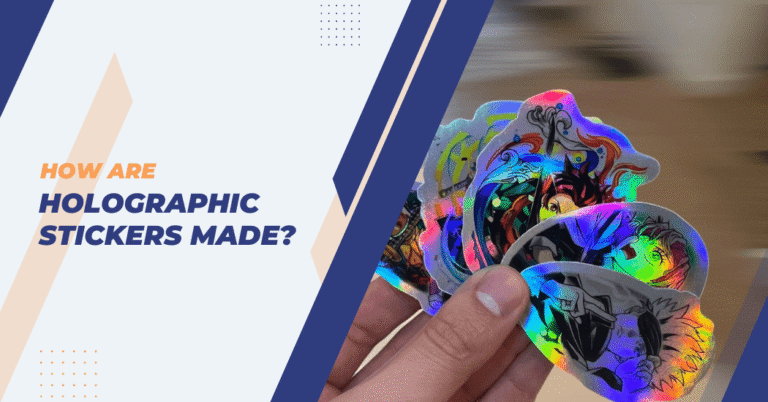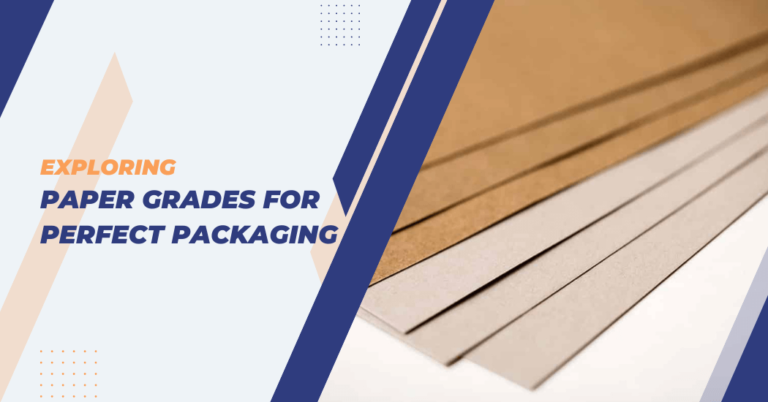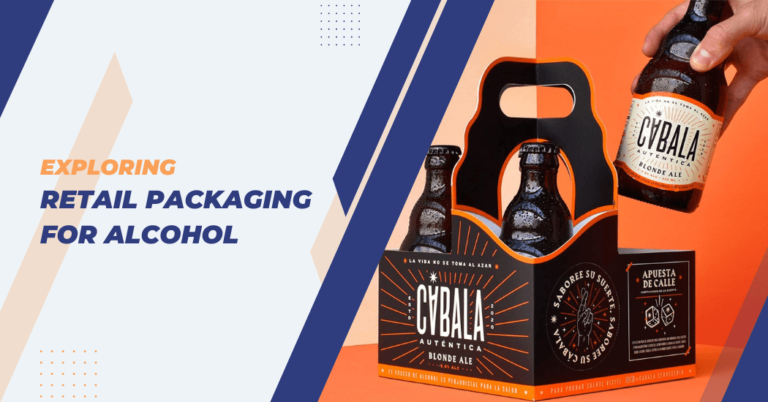How to create presentable retail packaging?
Creating presentable retail packaging is more than just putting goods in a box. It’s an essential aspect of product marketing and a vital opportunity to make a memorable first impression on the consumer.
Effective packaging does not only protect the product within but also communicates a brand’s identity and values. It transcends the basic function of containing a product, transforming it into a critical element in the buying decision process.
This guide will explore essential aspects of creating retail packaging that is not just functional but also aesthetically pleasing and aligned with the brand’s values.
7 Steps To Create Presentable Retail Packaging
From understanding your target audience to choosing sustainable materials and incorporating innovative design elements, we will cover the key steps to ensure your product stands out on the shelves and resonates with consumers.
- Understand your target audience: First and foremost, knowing your target audience is crucial. Different demographic groups will have varying preferences in terms of packaging design, colors and functionality. Conduct market research or surveys to identify the specific needs and desires of your consumer base. This step ensures that your packaging design speaks directly to those who are most likely to purchase your product.
- Choose sustainable materials: With growing environmental concerns, selecting eco-friendly packaging materials can significantly enhance your brand’s image. Opt for recyclable, biodegradable or compostable materials whenever possible. This approach not only demonstrates your commitment to sustainability but also appeals to eco-conscious consumers.
- Focus on branding: Ensure your packaging effectively communicates your brand identity. Use consistent colors, logos and fonts that align with your overall brand aesthetic. The packaging should serve as a physical extension of your brand, creating a seamless consumer experience from the first glance to the unboxing.
- Incorporate innovative design elements: Innovative design can make your product stand out on crowded retail shelves. Consider unique shapes, textures or interactive elements that can engage consumers and create a memorable unboxing experience. However, ensure that these creative choices do not compromise the functionality or integrity of the packaging.
- Prioritize functionality and protection: While aesthetics are important, the primary purpose of packaging is to protect its contents. Design your packaging to ensure the product arrives in pristine condition, considering factors like cushioning, stability and moisture resistance. Functional yet stylish packaging can significantly enhance consumer satisfaction.
- Provide clear and concise information; Consumers appreciate packaging that offers clear and accessible information about the product. Include essential details such as the product name, ingredients or materials, usage instructions and any relevant certifications. Ensure that the text is legible and the layout is easy to understand.
- Leverage feedback and iterate: Finally, iteratively improve your packaging design based on consumer feedback and sales data. Be open to making adjustments in response to evolving consumer preferences or technological advancements in packaging materials and design processes. Continuous improvement can help keep your product packaging fresh and appealing to consumers.
By following these key points, you can create retail packaging that is not only presentable but also effectively communicates your brand’s identity, values and the quality of your product, enhancing its appeal to consumers.
Additional tips for creating presentable retail packaging
In addition to the key steps mentioned above, here are some additional tips for creating presentable retail packaging
- Utilize high-quality printing and graphics: The visual appeal of your packaging is crucial in catching the consumer’s eye. Invest in high-quality printing techniques and use vibrant colors and attractive graphics to make your packaging stand out.
- Consider the size and weight of your packaging: In addition to protecting the product, packaging should also be efficient in terms of storage, shipping and transportation costs. Consider the size and weight of your packaging to reduce unnecessary expenses.
- Utilize storytelling: Storytelling can be a powerful tool in connecting with consumers on an emotional level. Use your packaging design to tell a story about your brand, product or values, creating a more personal connection with the consumer.
- Keep it simple: While creativity is essential, do not overcrowd your packaging with too many design elements or information. Keep the design simple and clutter-free to ensure that the focus remains on the product itself.
- Make it functional for reuse: Design your packaging in a way that encourages consumers to reuse or repurpose it. This eco-friendly approach not only adds value to the packaging but also keeps your brand top of mind with the consumer.
- Consider cultural sensitivities: If your product is sold in different regions or countries, be mindful of cultural sensitivities when designing packaging. Colors, symbols and images can hold different meanings in different cultures, so it’s essential to do thorough research and ensure that your design is appropriate.
- Stay updated with industry trends: The world of packaging design is constantly evolving, with new materials, techniques and trends emerging every day. Stay updated with the latest industry developments and consumer preferences to keep your packaging relevant and appealing.
- Don’t overlook the details: Attention to detail can make a significant difference in the overall presentation of your packaging. From choosing a high-quality finish to adding special touches like ribbons or embossing, these small details can elevate your packaging design and create a more luxurious feel.
- Use eco-friendly inks: Consider using eco-friendly inks for printing on your packaging to reduce the environmental impact. Vegetable-based or water-based inks are better alternatives to traditional petroleum-based inks.
- Test before finalizing: Before mass-producing your packaging, it’s crucial to do a test run to ensure that it meets all functional and aesthetic requirements. This can help identify any potential issues or areas for improvement before the final product reaches consumers.
By incorporating these additional tips into your packaging design process, you can create not only presentable but also sustainable and consumer-friendly retail packaging that effectively communicates your brand’s identity and values.
Considering cost-effectiveness without compromising on quality
While creating presentable retail packaging is essential, it’s also crucial to consider cost-effectiveness in the design process.
Here are some tips for achieving a balance between quality and cost:
- Research various packaging materials: Different packaging materials have different costs and properties. Conduct thorough research to find the most suitable and cost-effective material for your product.
- Simplify the design process: As mentioned earlier, keeping the design simple can help reduce costs without compromising on quality. Limiting the number of colors and design elements can also make printing more affordable.
- Use standard sizes and shapes: Custom packaging may be tempting but it usually comes at a higher cost. Consider using standard sizes and shapes for your packaging to save on manufacturing expenses.
- Partner with a reliable packaging supplier: Partnering with a trusted and experienced packaging supplier can help you navigate cost considerations and find the most suitable solutions for your packaging needs.
- Consider bulk purchasing: Buying materials in bulk can often lead to significant cost savings. Plan accordingly and purchase materials in large quantities if possible.
By finding ways to reduce costs without compromising on quality, you can create presentable retail packaging that is both visually appealing and budget-friendly.
Remember to always consider the needs and preferences of your target audience in the design process and continuously gather feedback to make improvements.
So, consider these tips along with the key steps mentioned earlier to create effective, presentable and cost-effective retail packaging for your brand.
Common mistakes to avoid in retail packaging design
While there are many factors to consider in retail packaging design, there are also some common mistakes that should be avoided.
Here are a few examples:
- Ignoring the target audience: Not considering the needs and preferences of your target audience can result in ineffective packaging. It’s essential to understand your consumers and create packaging that appeals to them.
- Poorly designed or illegible text: The text on your packaging should be clear, easy to read and convey the necessary information. Poor font choices or illegible text can make your packaging look unprofessional.
- Overcomplicating the design: As mentioned earlier, keeping the design simple is key. Overcrowding your packaging with too many elements or information can make it overwhelming and less visually appealing.
- Inconsistency with branding: Your packaging should be consistent with your brand identity and messaging. Inconsistent design elements or messaging can confuse consumers and weaken your brand image.
- Lack of sustainability: In today’s environmentally conscious market, it’s crucial to consider sustainability in packaging design. Failing to do so can result in negative perceptions of your brand and harm the environment.
By avoiding these common mistakes and continuously gathering feedback from consumers, you can create effective and presentable retail packaging that accurately reflects your brand and appeals to your target audience.
So, keep these points in mind when designing your next packaging project to ensure its success.
FAQs – Retail Packaging
Why is it crucial to consider the target audience in packaging design?
Understanding your target audience ensures your packaging meets their preferences, needs and values, making your product more appealing and increasing the likelihood of purchase.
How can I ensure that my retail packaging stands out on the shelves?
Use unique design elements, maintain brand consistency and create interactive or engaging packaging to capture attention and differentiate your product from competitors.
What is the significance of testing the packaging before finalizing it?
Testing helps identify any functional or aesthetic issues, ensuring that your packaging meets all requirements and performs well under real-world conditions.
Are there any tools to help with designing retail packaging?
Yes, there are various software and online tools available for packaging design, such as Adobe Illustrator, Canva and Packhelp.
These tools offer templates, design elements and customization options to create professional-looking packaging. So, leverage these resources to make the design process smoother and more efficient.
Final Thoughts
Effective and presentable retail packaging is a crucial aspect of any brand’s marketing strategy. It not only protects the product but also serves as a reflection of the brand’s identity and values.
By following the key steps mentioned above, considering cost-effectiveness and avoiding common mistakes, you can create packaging that effectively communicates with your target audience and sets your brand apart from competitors.
Keeping in mind the increasing importance of sustainability, it’s also essential to consider eco-friendly options and continuously improve your packaging design process.
So, make sure to invest time and resources into creating presentable and sustainable retail packaging that strengthens your brand’s image and resonates with consumers.






